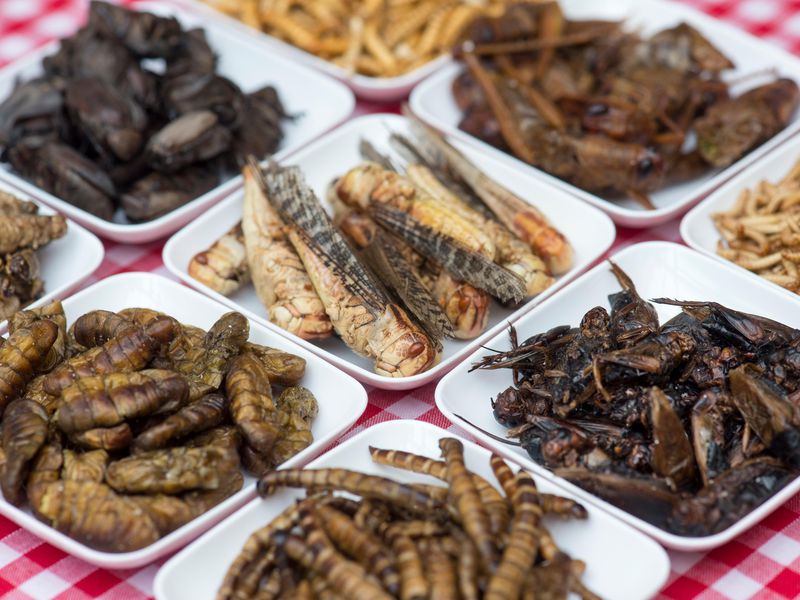Although insects have been a part of some cuisines for centuries, it has been a dining decision made from necessity, not preference. When there is little else to eat, a grasshopper.

Richard Weiss, writing for Bloomberg, suggested bugs could be on your personal menu sometime in the near future. "Bugs have taken a long time to make it on mainstream menus even though United Nations food experts have argued that they can satisfy meat cravings without all the damage to rain forests and depletion of water," he said, forgetting the natural environmental havoc a plague of locusts can cause.
Although insects have been a part of some African and Asian cuisines for centuries, it has been a dining decision made from necessity, not preference. When there is little else to eat, a grasshopper takes on important dietary significance.
Weiss wrote about a marketing test for burgers currently being conducted by Coop, a Swiss supermarket where shoppers will be able to buy burger patties and meatballs made from beetle larvae. The mealworm burger patties, which also contain rice, carrots and spices such as oregano and chili, will cost the equivalent of $9.24 for a pack of two and mealworm balls will sell at the same price for a pack of 10, approximately double the price of their meat-based counterparts.
Add the 'yuck' factor to the price and you have a huge incentive to not even sample the products. At best, these way off-beat proteins might be an amusement to draw curious customers into the store. At worst, it might give the supermarket a reputation as 'bug central,' sending droves of shoppers down the street to the nearest competitor.
An optimistic Coop procurement manager, Silvio Baselgia, issued a statement that said, “These products are perfectly suited for those who want to learn about the culinary diversity of insects.” He suggested eating the insect balls in pita bread with fresh vegetables and smothered in yogurt sauce might make them more palatable.
A kale and Greek yogurt dressing probably won't do it for most consumers but we still eat a lot of bug parts without realizing it. An Ohio University fact sheet estimates that we eat from 1-2 lb. of insects each year
Speaking about cricket cuisine with SIxWise.com, Dr. Philip Nixon, an entomologist at the University of Illinois, said, "They're (insects) actually pretty healthy." Putting an environmentalist spin on it, he said, if we were only "more willing to accept certain defect levels such as insects and insect parts, growers could reduce pesticide usage."
In fact, the Food & Drug Administration already approves the consumption of bug parts and other revolting ingredients. Only in very small amounts, of course, because they've determined it's economically unfeasible to produce perfectly pure foods. A little excreta, rodent hairs or bug brains are acceptable. Before you sit down to a nice family dinner tonight, watch this CBS news report on what's allowed: https://www.cbsnews.com/pictures/11-revolting-things-government-lets-in-your-food/
About the Author(s)
You May Also Like

.png?width=300&auto=webp&quality=80&disable=upscale)

